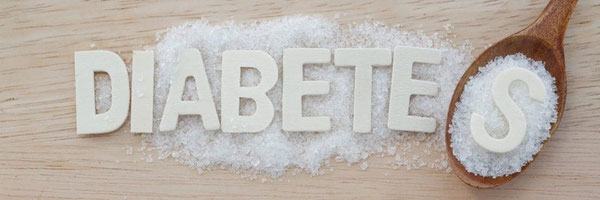Which types of drinks contain the most amount of sugar?
Grade 8
Presentation
Hypothesis
Our hypothesis is that soda would contain the highest amount of sugar compared to the other drinks we will test. A typical can of pop contains a significant amount of sugar, it’s often equivalent to 7-10 teaspoons which is 29.4-42 grams. This surpasses the daily amount of sugar each person should be consuming.
Research
About 90-95% of diabetes types are type 2 diabetes. Globally, an estimated 6.3% of the world's population is affected by type 2 diabetes, with the majority of diabetes cases being type 2. The reasons behind getting type 2 diabetes are mostly related to family history, obesity, and lack of physical activity. This mostly relates to consuming high amounts of sugar in drinks, sweets, and other types of food.
Variables
Controlled Variable:
- The amount of drinks (40 mL)
- The time we dipped the test strip in the drink
- The time we let the test strip rest to show the result (3 mins)
- Tools: Test strip, measuring cup (plastic)
Manipulated Variable:
- Type of drink
Responding Variable:
The amount of sugar/glucose that is shown inside our drinks.
These are the results:
Smoothies:
- Mango >300mg
- Vegetables = 1000mg
- Strawberry banana = 300mg
Juices:
- Apple = 100 mg
- Orange = 300 mg
- Lemonade = 300 mg
Soda:
- Sprite < 1000 mg
- Coke > 300 mg
- Diet Coke > 1000 mg
- Fanta < 100 mg
- Pepsi = 1000 mg
Common drinks:
- Energy drink = 0 mg
- Milk = 0 mg
- Hot chocolate = 100 mg
Procedure
1. Gather all materials
2. Pour one type of the drinks inside the measuring cup until it fills up to 40 mL
3. Get one of the test strips
4. Dip it for 2 seconds inside the measuring up full of the drink.
5. After 2 seconds, scrape of the excess drink and place it on a piece of tissu
6. Set the timer to 3 minutes and wait
7. After 3 minutes, compare the colour of the strip to the package colour to determine how much glucose is in the drink
8. Record the results
*Repeat for 12 more times
Observations
We had observed that the test strips changed colour after more than 3 minutes (which is more than the recommended time). After resting for more than 3 minutes, we saw that the test strips turned slightly darker. According to the web, it’s likely less accurate to take the results after 3 minutes.
Analysis
Due to the high amounts of drinks we had tested, me and my partner decided to calculate the average of each type of drink. The results were:
Smoothies = 533.33 mg
Juices = 233.33 mg
Soda = 540 mg
Milk = 0 mg
Energy drink = 0 mg
Hot chocolate = 100 mg
In general, the soda category has the highest amount of sugar and the second is in smoothies, meanwhile, the other categories remain at a fairly low amount. From this information, we can conclude that you can consume a fairly high amount of sugar in soda/pop.
Conclusion
In conclusion, this experiment proves that drinking high amounts of soda/pop can increase the risk of having type 2 diabetes due to the high amounts of sugar that is contained in these drinks. In the website, clevelandclinic.org, it states that men should consume no more than 9 teaspoons (36 grams) of sugar a day, while for women, they shouldn’t consume more than 6 teaspoons of sugar (25 grams). The amount of sugar presented in sweetened beverages completely surpasses this daily amount for each person. High amounts of sugar can increase the risk of getting diabetes.
Application
This experiment can apply in real life by letting others know how much sugar they are consuming while drinking sweetened beverages. Knowing how much sugar they are consuming, this can prevent the risk of having diabetes as research shows that you really can get diabetes by consuming too much glucose which are present in beverages.
Sources Of Error
There are some potential errors in our experiment:
- The temperature of the drinks was possibly different. This could have been avoided if we measured the temperature of each drink before testing it.
- Using the bare eye to compare the colour of the strip and package and then determining the amount of glucose by approximating could result in inaccurate results, especially under certain lighting conditions.
- To get the most accurate results, the experiment should’ve been done at the same time to all the drinks, or as soon as it was opened, to prevent evaporation of the drink and resulting in more concentrated sugar levels.
- If not using gloves, etc. there could be contamination on the test strips, resulting in inaccurate results.
Citations
Online Sources:
"How much sugar is in coca cola" - Coca-Cola Company.com
"Type 2 diabetes" - mayoclinic.org
"Can People With Diabetes Have Sugar?" - health.clevelandclinic.ca
"How Much Sugar Is Too Much?" - heart.org
Scientific Articles:
"Sugar intake from sweetened beverages and diabetes" - National Library of Medicine
"Association between sugar-sweetened beverages and type 2 diabetes" - National Library of Medicine
Acknowledgement
I would like to thank Ms Cohen for guiding me and informing me what I should be completely through this process.
I'm thankful to my parents for providing the resources that are needed for this project.

